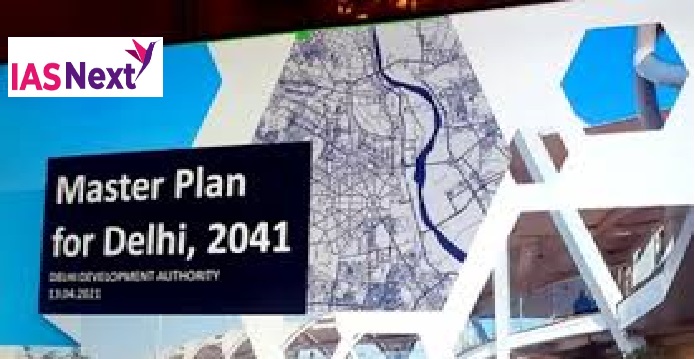CURRENT AFFAIRS
Get the most updated and recent current affair content on Padhaikaro.com
Delhi’s Master Plan 2041, its key areas and challenges:
- IAS NEXT, Lucknow
- 13, Nov 2021

Reference News:
The Delhi Development Authority (DDA) has extended the ongoing public hearing regarding the draft Master Plan for Delhi 2041 till November 24.
- The Master Plan was put up for public scrutiny in June this year.
- It will take the land-owning agency two or three months after the public hearing concludes to finalise and notify the plan.
Firstly, what is a master plan?
A master plan of any city is like a vision document by the planners and the land-owning agency of the city, which gives a direction to the future development. It includes analysis, recommendations, and proposals keeping in mind the population, economy, housing, transportation, community facilities, and land use.
What is the Master Plan 2041 for Delhi?
- It seeks to “foster a sustainable, liveable and vibrant Delhi by 2041”.
- In the housing sector, it talks about incentivising rented accommodation by inviting private players and government agencies to invest more, keeping in mind the large migrant population.
- ‘User pays’ principle: To address parking problems, it suggests a ‘user pays’ principle, which means users of all personal motor vehicles, except for non-motorised ones, have to pay for authorised parking facilities, spaces and streets.
- It aims to minimise vehicular pollution through key strategies, including a switch to greener fuels for public transport and adoption of mixed-use of transit-oriented development (also known as TOD).
- The draft lays a clear boundary of the buffer zone near the Yamuna river– 300-metre width shall be maintained wherever feasible along the entire edge of the river.
Changes proposed in the wake of pandemic:
- It aims to develop common community spaces to provide refuge spots, common kitchens and quarantine space in an emergency.
- To improve the nighttime economy, the plan focuses on cultural festivals, bus entertainment, metro, sports facilities, and retail stores included in Delhi Development Authority (DDA)’s Night Life Circuit plan.
- It also proposes to reduce vulnerability to airborne epidemics through decentralised workspaces, mandatory creation of open areas, better habitat design and green-rated developments to reduce dependence on mechanical ventilation systems.
Challenges in implementation:
- Confrontation from political wings.
- Lack of resources and funds.
- Corruption in different departments.
- Lack of political and bureaucratic will and multiplicity of agencies.